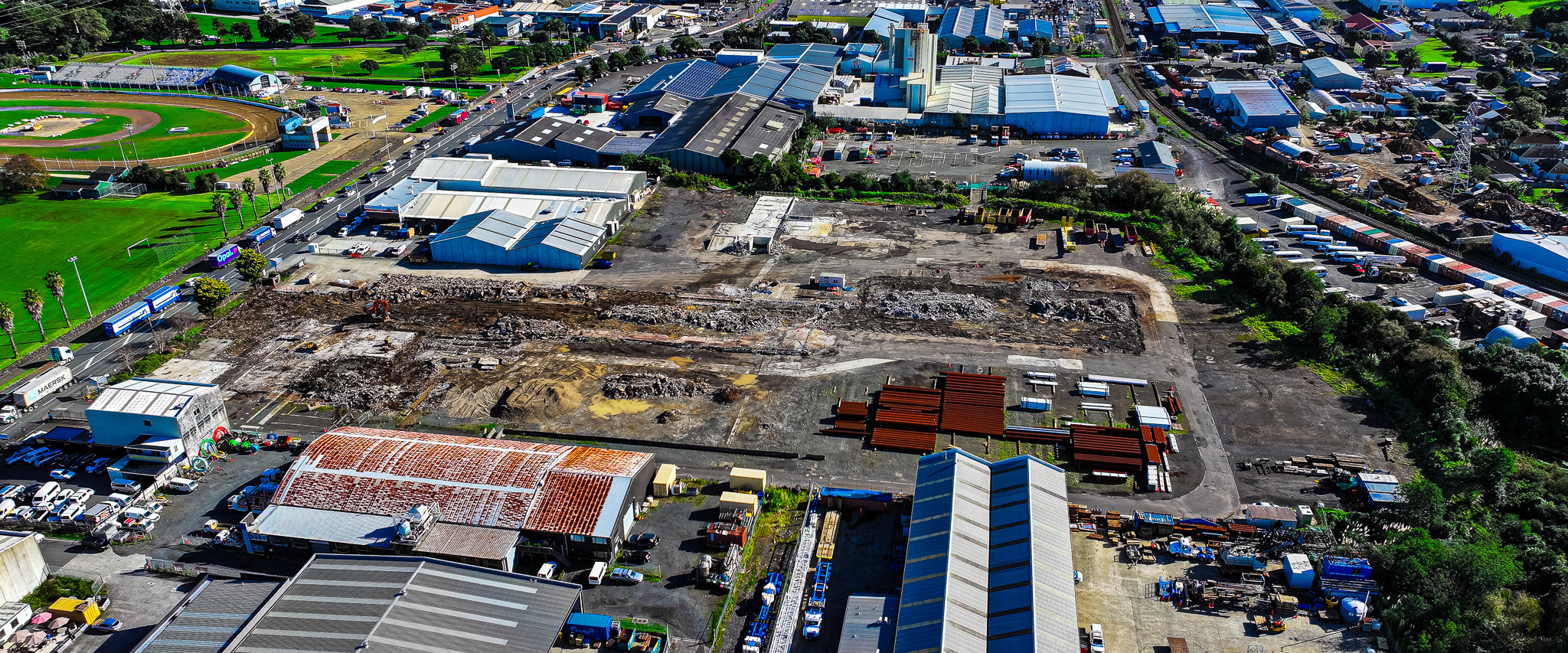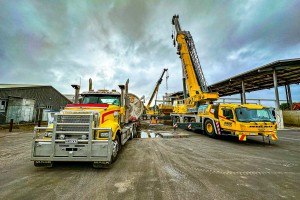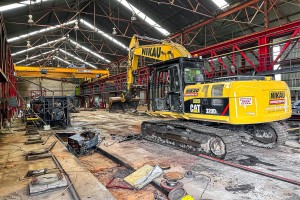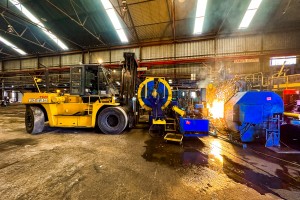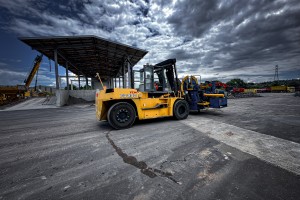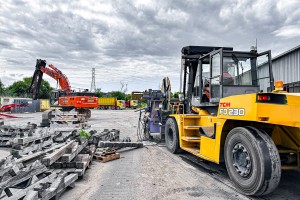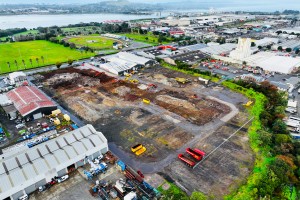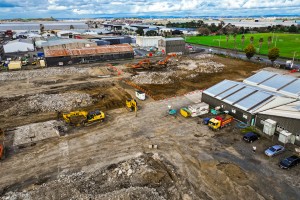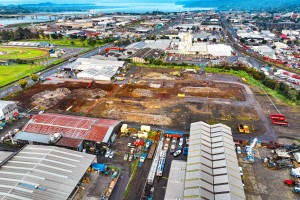DECONSTRUCTION OF FORMER STEEL PIPE FACILITY, PENROSE
Project Overview
The deconstruction of the former Steel Pipe facility in Penrose represents a landmark achievement for Nikau Contractors, showcasing our proficiency in managing complex and sensitive deconstruction projects. This project holds considerable significance for Auckland’s industrial history and for the client, given its historical and cultural value, as well as the challenges presented by asbestos contamination. Our meticulous approach to planning and execution was key to overcoming these challenges and ensuring the project's success.
Project Challenges
The deconstruction of the Steel Pipe facility involved a series of intricate challenges:
-
Structurally Compromised Buildings: The site featured buildings with weakened structural integrity. This required a carefully planned and executed dismantling strategy to ensure safety and efficiency throughout the project.
-
Plant and Equipment Removal: The facility contained specialised plant and equipment used for manufacturing steel pipes, serving clients like Watercare. Removing these technical assets required precision and expertise to avoid damage and ensure safe handling.
-
Noise Control: Given the site's proximity to residential and industrial areas, noise control measures were crucial. We implemented strategies to minimize noise pollution, ensuring that the project did not disrupt the surrounding community.
-
Dust Suppression: To maintain air quality and mitigate environmental impact, comprehensive dust control measures were employed. These strategies were essential for protecting both the workers on site and the local environment.
-
Erosion and Sediment Management: The project required effective erosion and sediment controls to prevent runoff and protect local waterways. Our measures ensured that sediment and erosion were managed, safeguarding the surrounding ecosystem.
Nikau was selected for this complex project due to our established track record in managing intricate deconstruction tasks. Our collaboration with the Local Territorial Authority (LTA) and various stakeholders from the initial consent stage through to on-site execution was instrumental in navigating these challenges and achieving successful outcomes.
Contractor Responsibilities
-
Safe Deconstruction: We conducted deconstruction activities with a strong focus on safety, especially given the proximity to a protected waterway. Stringent protocols were adhered to, ensuring the protection of both environmental and cultural assets.
-
Community Engagement: In collaboration with the client and community stakeholders, we created training opportunities and supported local employment. This approach extended the project’s benefits beyond immediate objectives, contributing to community development.
-
Site Management: Managed operations efficiently within a bustling industrial and public area. We addressed logistical challenges associated with main arterial routes, minimising disruption to daily traffic and maintaining operational efficiency.
-
Erosion and Sediment Control: Implemented robust erosion and sediment control measures across the site. These measures were vital for managing environmental impacts and protecting local water systems throughout the deconstruction process.
-
Asbestos Removal: Expertly handled the removal of 100 tonnes of asbestos cladding using advanced crane and basket techniques. This operation was conducted with the highest safety standards. Additionally, we processed over 2,000 tonnes of contaminated concrete and soil, reusing the material on-site for further development, thereby enhancing sustainability.
-
Timber Salvage: Recovered and salvaged significant quantities of native and exotic timbers. These materials were repurposed, contributing to the project's sustainability goals and reducing waste.
-
Concrete Recycling: Efficiently demolished all structures, slabs, and foundations, recycling over 10,000 tonnes of concrete. The recycled concrete was used for on-site backfilling, reducing the need for new materials and minimising waste.
-
Steel Recycling: Recycled more than 3,000 tonnes of steel, aligning with our commitment to sustainable practices and reducing the environmental footprint of the project.
This deconstruction project not only highlights Nikau’s expertise in managing complex challenges but also underscores our commitment to respecting environmental and cultural sensitivities.
For more information about this project or to discuss how we can assist with your specific needs, please contact us directly

